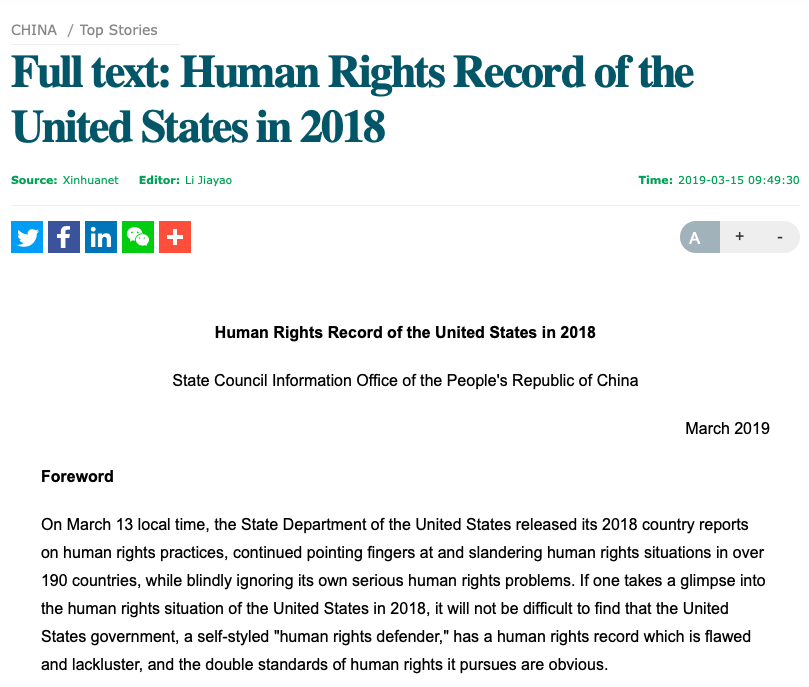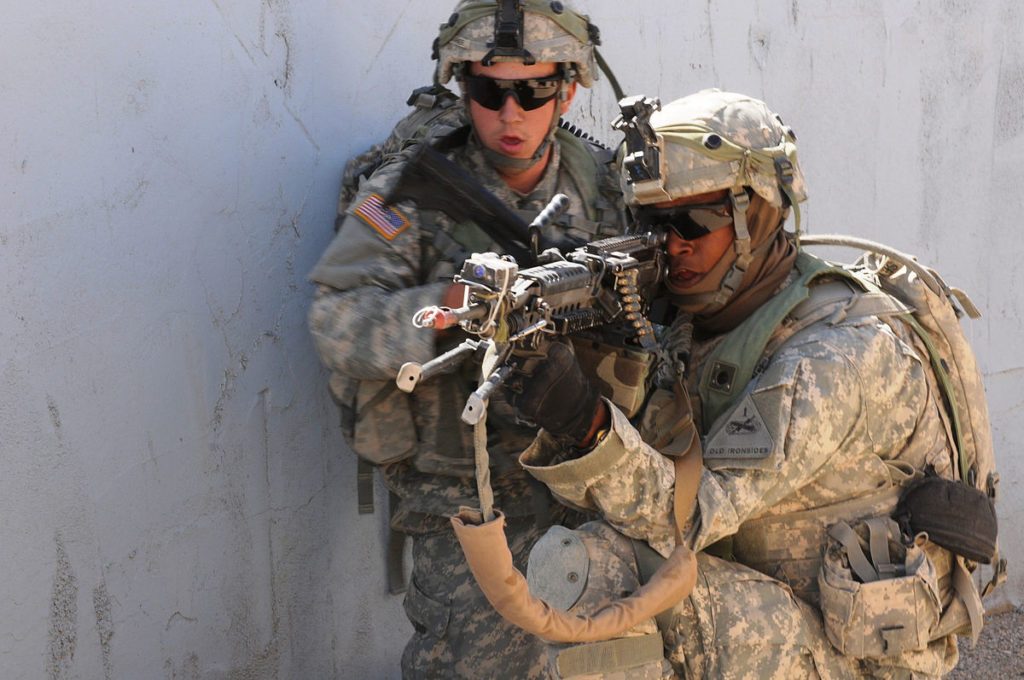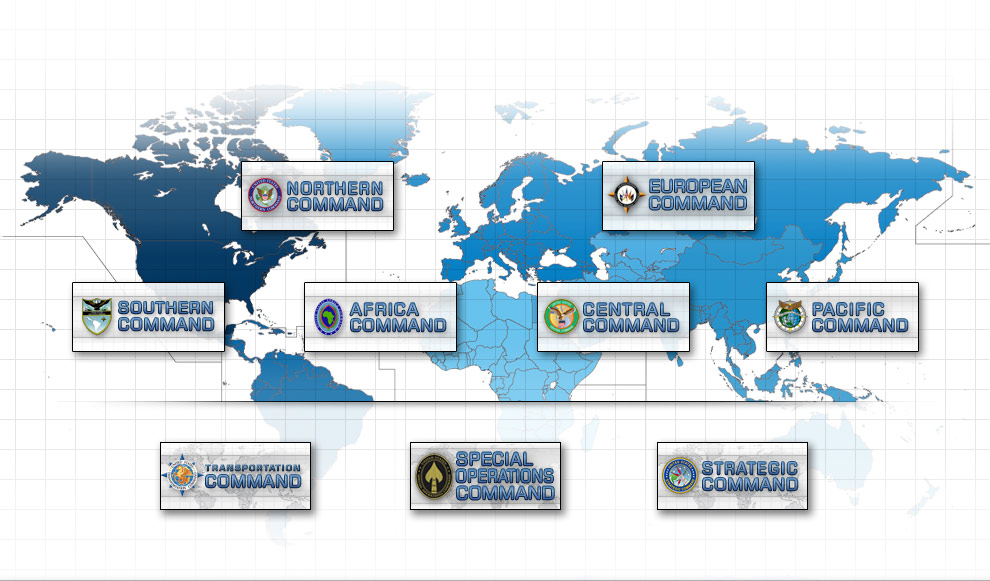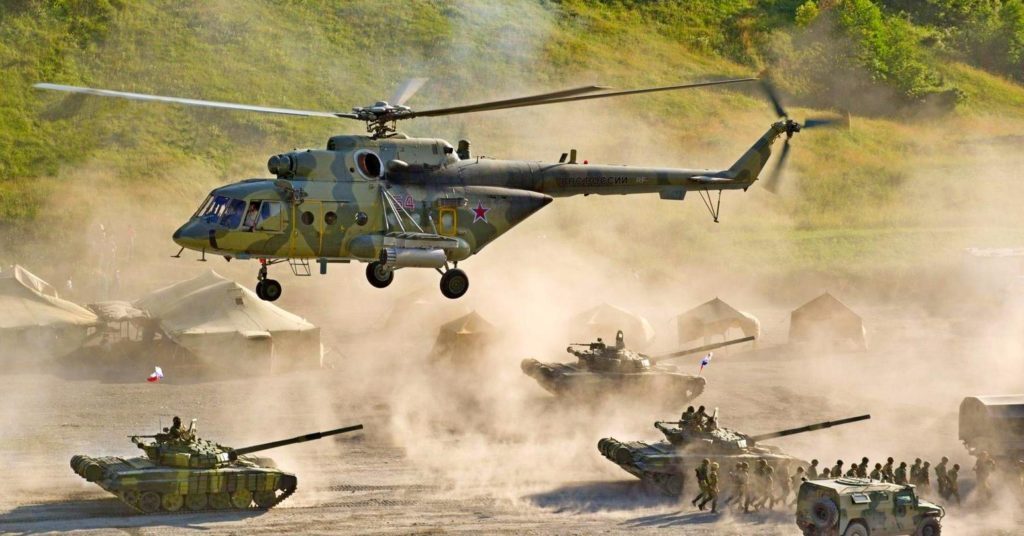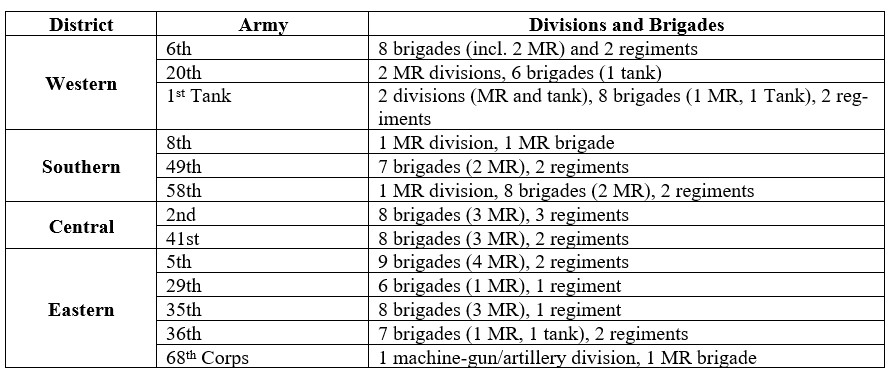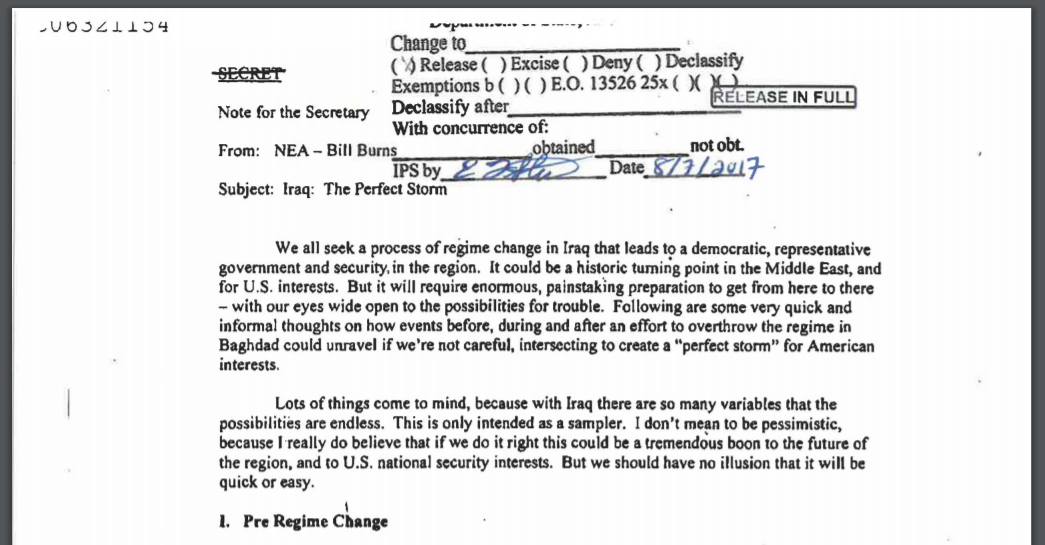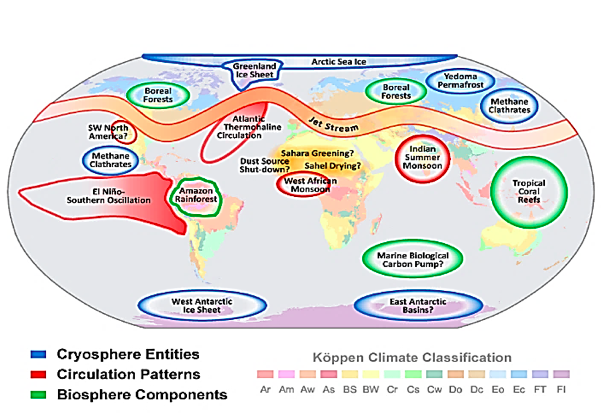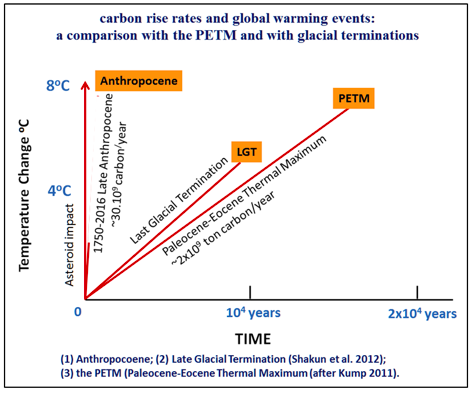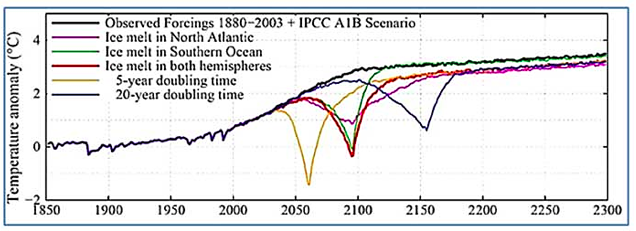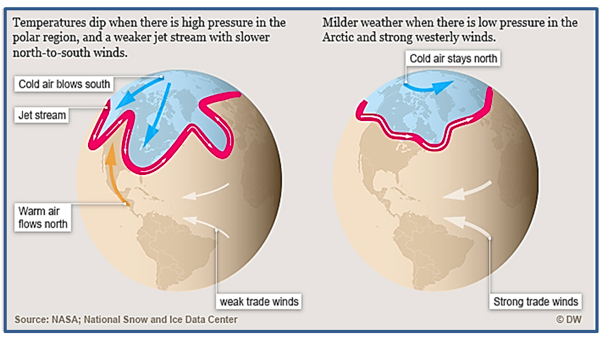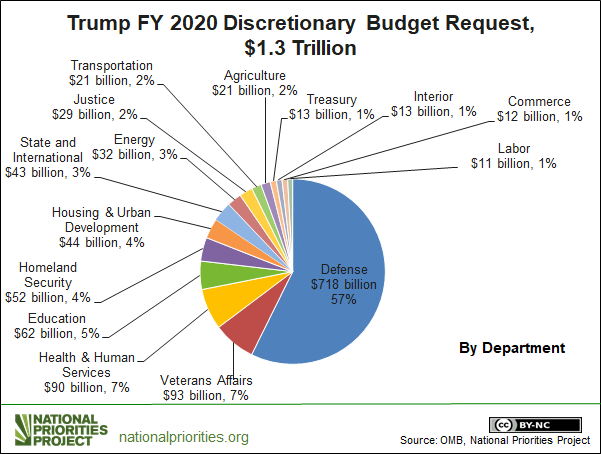From the neoconservative far right to the far left we have been deluged by writings about the “crisis of global capitalism”. While these writings, according to the ideological predispositions of their authors, differ as to the causes, consequences, prognosis and cures, there is a virtual consensus that “the crisis” threatens to put an end to capitalism as we know it—certainly in its neoliberal form. And there is no doubt that for a short period, from 2008 to 2009, the capitalist system in Europe and the United States suffered a shock that shook the system to its foundations, threatening the functioning and the stability of key financial institutions as well as the capitalist development of economies at the centre of the system.
However, as is the norm for capitalism, the crisis merely served to restructure the system, to shake out its underperforming and weaker agents and destroying capital in the process but at the same time regenerating conditions for a new round of capital accumulation. As it turned out finance capital, the major force behind and the principal detonator of the financial meltdown and its repercussions, recovered from its losses—over $4 trillion according to the IMF (Landler, 2009)[i]—and the capitalist class in its financial core was strengthened, to no small extent by the bailout of the banks and other financial institutions owned by elite members of this class.
With this bailout, which the IMF estimated would require at least $1.1 trillion of public funds—in fact well over $3 trillion—combined with the magic of the market in restoring the value of the elite’s financial assets, the tiny group of billionaires at the apex of this elite (some 1,200), not only recovered the pre-crisis value of its financial assets, but it is estimated that their fortunes had increased by at least 25% and as much as 37%.[ii]In addition—and more importantly—the political, social, ideological conditions of “the crisis” served to consolidate the dominance of capital over labour, converting a crisis of capital into a crisis for labour (and to some extent a crisis in the functioning of the state).[iii]

In short, the crisis has been used to the strategic advantage of capital in its class war against labour, to further the accumulation of capital and the consolidation of capitalist rule. This class war, like the recession—described by a number of analysts as a “triple crisis”—can be traced back to the production crisis of the early 1970s and beyond to the “Great Depression” at the turn into the third decade of the 20th century.
The result: the concentration of capital, an extension of the fundamental capitalist relation of wage labour exploitation, a deepening of the global divide between capital and labour in the distribution of wealth and income, and an expansion of the global reserves of surplus labour needed to reactivate the accumulation process. However, the focus as well as an overemphasis on the dynamics of financial capital—on the (mal)functioning of the financial institutions and the failure in global governance—has distracted many analysts and activists on the Left, leading them not to see what is happening at a more fundamental level, both at its epicentre (the US and Europe) and in its various peripheries, and to appreciate fully the social and development implications of the crisis. For one thing, the global financial crisis is far from global in its scope and scale, and despite its tri- or multi-dimensional form it is essentially a systemic production crisis.
For another, the crisis points to the dynamics and conditions of a major global realignment of economic power (from the US and Europe to the BRICs) and the efforts of financial capitalists at the centre of the system to protect their interests and maintain their hegemony over the world capitalist production process. Furthermore, the notion of a homogeneous global crisis of capitalism advanced on both the right and left[iv]overlooks profound differences in the social and political dynamics of capitalist development, and the forces and relations of production, within and among diverse regions, countries and classes, in diverse contexts, social formations and staging areas of a global class war.
Above all—and to the main point of this article—the current literature on the crisis is overly focused on the economics and political economy of the crisis, on the problems that it presents for capital (and its causes, policy prescriptions and strategic responses).
As a result, the crisis literature reflects the absence of studies into the functionality of the crisis for restructuring the system, and a relative lack of studies of what we might term the “sociology of crisis”.[v]
The Global Crisis Thesis
Advocates of a global crisis thesis argue that beginning in 2007 and continuing to the present the world capitalist system is on the verge of collapse and that sought-for or found signs of a recovery is a mirage or but a temporary refuge. They cite the stagnation and continuing recession (particularly the growing and disturbingly high rates of household and public sector debt, youth unemployment and the slow growth in jobs) in North America and the Eurozone, as well as the unsustainable countermeasures taken in some cases such as Greece.
These critics present or cite GDP data hovering between negative to zero growth in production and employment. Their argument is backed up by data citing double-digit unemployment in both regions. They frequently correct the official data which understate the number and percentage of the unemployed by excluding part-time, long-term unemployed workers and others.
The “crisis of capital” argument is consolidated by citing the millions of American homeowners who have been evicted by the banks, the sharp increase in poverty and destitution accompanying job losses, wage reductions and the elimination or reduction of social services. The idea of “crisis” is also associated with the massive increase in bankruptcies of mostly small and medium size businesses and regional banks, the erosion of the production apparatus and the inordinate concentration of wealth and income resulting from the policy dynamics of deregulated “free” market capitalism.[vi]
The Global Crisis: The Loss of Legitimacy
The critics of untrammelled free market capitalism (“neoliberalism” as per the Washington Consensus), especially in the financial press, have conceived of a “legitimacy crisis of capitalism”, citing polls showing substantial majorities questioning the injustice and damaging effects of the capitalist system, the vast and growing inequalities, and the rigged rules by which banks exploit their size (“too big to fail”) to raid the Treasury at the expense of social programs. In short the advocates of the thesis of the “global crisis of capitalism” make a strong case, demonstrating the profound and pervasive destructive effects of the capitalist system on the lives and livelihoods of the great majority of people—“humanity”.
The problem is that a presumed “crisis of humanity” (more specifically a crisis of labour—of salaried and wage workers) or a “human disaster” is not the same as a crisis of the capitalist system. In fact, as we shall argue below growing social adversity, declining income and employment, have been major factors in facilitating the rapid and massive recovery of the profit margins of many large-scale corporations in the wake of the “global financial crisis”. Moreover, the thesis of a “global” crisis of capitalism amalgamates disparate economies, countries, and classes with sharply divergent experiences at different historical moments.
A Global Crisis or Uneven and Unequal Development?
It is incorrect and somewhat foolish to argue for a “global crisis” when several of the major economies in the world economy did not suffer a major downturn and others recovered and expanded rapidly. China and India did not suffer even a recession. Even during the worst years of the Euro-US decline (2008-2009), the economies and emerging markets of the Asian giants grew on average about 8% a year. Latin America’s economies, especially those of the major agro-mineral export countries (Argentina, Brazil, Peru, Chile…) with diversified markets that respond to the growing demand for natural resource-based commodities in China and India, paused briefly (in 2009) before resuming moderate to rapid rates of growth (3% to 7% from 2010 to 2012).[vii]
By aggregating economic data from the Euro-zone as a whole the advocates of global crisis, overlooked the enormous disparities in performance within the zone. While Southern Europe wallows in a deep sustained depression from 2008 into the foreseeable future, German exports in 2011 set a record of a trillion euros; Germany’s trade surplus reached 158 billion euros, after a 155 billion euro surplus in 2010 (BBC News, Feb. 8, 2012).
While aggregate Eurozone unemployment has reached 10.4%, internal differences defy any notion of a “general crisis”. Unemployment in Holland is 4.9%, Austria 4.1% and Germany 5.5%, with employer claims of widespread skilled labour shortages in key growth sectors. On the other hand in Southern Europe, on the margins of European capitalism, unemployment runs to depression levels: Greece 21%, Spain 22.9%, and Portugal 13.6 (Financial Times, January 19, 2012, p. 7). In other words, “the crisis” does not adversely affect some economies, which in fact profit from their market dominance and techno-financial strength over dependent, indebted and more backward economies. Thus, to conceive of a “global crisis” obscures the fundamental and dominant exploitative relations that facilitate “recovery” and growth of some advanced capitalist economies over and against their competitors and client states. In addition, global crisis theorists mistakenly amalgamate crisis-ridden, financial-speculative economies (US, UK) with dynamic productive export economies (Germany, China).
Another problem with the thesis of a “global crisis” is that it overlooks profound internal differences in age cohorts. In several European countries youth unemployment (16-25) hovers from between 30 to 50% (Spain 48.7%, Greece 47.2%, Slovakia 35.6%, Italy 31%, Portugal 30.8% and Ireland 29%) while in Germany, Austria and Holland youth unemployment runs to 7.8%, 8.2% and 8.6% respectively (Financial Times, February 1, 2012, p. 2). These differences underlie the reason why there is no “global youth movement” of the “indignant” and “occupiers”. A fivefold difference in the rate of youth unemployment is not conducive to “international” solidarity. The concentration of high youth unemployment explains the uneven development of mass street protests and its concentration in Southern Europe. It also explains why the northern Euro-American “anti-globalization” movement is largely a lifeless forum which attracts academic pontification on the “global capitalist crisis” and why the “social forums” in the anti-globalization movement are unable to attract the millions of unemployed youth in Southern Europe.
Given rates of youth unemployment averaging 20 to 30%, and reaching 60% in some countries, and given the unresponsiveness of European state officials to the demand for change in their austerity policies (in thrall as they are to the dictates of capital) these youth are more attracted or given to direct action. In this regard, globalists and globalization theorists (for example, Antonio Negril, in his celebrated but rather useless intellectual intervention with his notion of ‘multitudes’) overlook the specific way in which the multitude of unemployed young workers are exploited in their dependent debt-ridden countries. They ignore the specific way they are ruled and repressed by centre-left and rightist capitalist parties. The contrast was evident in the winter of 2012 when Greek workers were pressured to accept a 20% wage cut while workers in Germany were demanding a 6% increase. Since then workers all over Europe, and most particularly in Spain and Portugal, but also Italy, have been pressured to accept a serious cutback in wages and benefits, and an even deeper cut in the social wage via austerity measures mandated by the guardians and officials of the European capitalist state system. In March 2012 24 EU heads of state signed a ‘fiscal pact’ to make neoliberal austerity policies binding on all governments. The ‘Treaty on Stability, Coordination and Governance in the Economic and Monetary Union’, as the European Fiscal Pact is officially called, is more than the result of unrealistic plotting by neoliberal economists and politicians. Further waves of privatization, destruction of jobs, restriction of public services, social degradation, and wage reduction, are pre-programmed across the whole of Europe; and all to protect the profits of a small group of rich capitalists. The destructive policies, pushed ahead mainly by Germany and France, have been accepted and put into practice by nearly all EU governments, because in every state there is a wealthy clique who profit from the increasing pressure on the wage-earning population.
If the “crisis” of capitalism is manifest in specific regions, so too does it unevenly affect different age and racial segments of the waged and salaried working classes—and there is likely a gender dimension to these differences as well (although for some unknown reason(s) there are no studies of this issue in the most recent context of capitalist development in conditions of crisis). The unemployment rates among youth and older workers varies enormously: in Italy the ratio is 3.5/1, Greece 2.5/1, Portugal 2.3/1, Spain 2.1/1, Belgium 2.9/1 while in Germany it is 15/1 (Financial Times, February 1, 2012). In other words, because of the higher levels of unemployment among youth they have a greater propensity for direct action “against the system”; meanwhile older workers with higher levels of employment (and unemployment benefits) have shown a greater propensity to rely on the ballot box and engage in limited strikes over job and pay related issues.
The concentration of unemployment among young workers means that they form the main agency and “available core” for sustained direct action, but it also means that they can only achieve limited unity of action with the older working class that are experiencing single digit unemployment. But, it is also true that the great mass of the unemployed youth provides a formidable weapon in the hands of employers with which to threaten to replace employed older workers. As Marx might have predicted, capitalists not infrequently today resort to unemployment as a lever of capital accumulation, using the unemployed to lower wages and benefits, and to intensify the rate of exploitation (= “increase productivity”) and thus increase profit margins. Far from being simply an indicator of “capitalist crisis”, high levels of unemployment continue to serve as a mechanism for increasing the rate of profit and for capitalists to make money. Thus, as the capacity of the working class for material consumption declines—viewed by some sociologists and economists as evidence of a “disappearing middle class” (hollowing out of middle strata in the income distribution) —the consumption of luxury goods for the capitalist class is on the increase: for example, the sales of luxury cars and watches is booming.
A Labour Crisis: The Counter-Thesis
Contrary to the “global capitalist crisis” thesis, a substantial amount of available data refutes its assumptions. For example, a recent study reports that “US corporate profits are higher as a share of gross domestic product than at any time since 1950” (Financial Times, January 30, 2012). US companies’ cash balances have never been greater, thanks to an intensified exploitation of workers, and a multi-tiered wage system in which newly hired workers work for a fraction of what older workers receive (thanks in part to agreements signed by “doormat” labour bosses).
These and other data on a “recovery” of the rate of profit in the wake of the global crisis not only reflects an increase in the rate and dominant forms of labour exploitation—as well as an expansion of imperialist exploitation (see the discussion below)—but they point towards a major consequence of the class war launched by the capitalist class against workers in the early 1970s: a steady and continuing decline in the share of labour in the social product, and a weakening of the organizational and political capacity of the working class.[viii] These changes in the capital-labour relation can be traced back to the crisis that brought to an end the “the golden age of capitalism” in the early 1970s,[ix] but they also implicate the more recent and perhaps current systemic crisis, which is unique in that it is the first capitalist crisis in history triggered by banks lending to workers for them to buy houses, so providing them a short-lived (and illusory) buy into the “American dream” (and thereby an ideology of possessive individualism and striving to accumulate).[x]
Although most analysts and critics on the centre-left have focused on the distribution of household income—on the concentration of income within the top 1% of income earners or households, the disappearance of the middle strata in this distribution, and the immiseration of households at the bottom end—arguably a more critical variable of the capitalist development process is the share of labour (and capital) in the distribution of national (and global) income. In this regard there are no hard data but all the indications are that the relative decline in the relative participation of labour (in the form of wages and salaries) and capital (income available for investment) in the national (and global) income distribution has increased in recent years. Statistics that indicate this include a persistent decline in the remuneration of labour and the value of wages, a pattern accentuated by recent post-crisis developments, and a corresponding incline in the returns to capital and remuneration of services to capital—for example, the income and benefits that accrue to the CEOs of major capitalist enterprises. Of even greater import is the return to invested capital in key economic sectors (for example, the natural resources extraction industry) in the most recent conjuncture of post-crisis capitalist development.[xi]
On the other side of the ledger many European and American workers can no longer find or have lost their jobs, millions of US workers have lost their homes or have been forced to take on an unaffordable level of personal debt, masses of migrant workers all over the capitalist world are subjected to conditions of super-exploitation in the informal sector, and millions have been impoverished or pushed into crime, drugs and suicide. In Greece suicides increased 40% between 2009 and 2012. In conditions of US and European capitalism these and other such problems have reached crisis proportions, but they are to some extent mitigated by what remains of the welfare state. Even so, under current conditions, by all appearances and the few available accounts, the situation of many workers continue to deteriorate. What we have is a system in crisis—but a crisis from which a few profit and many suffer.

The “crisis of capitalism” theorists have failed to examine the financial reports of the major US corporations. According to General Motors 2011 report to its stockholders, they celebrated the greatest profit ever, turning a profit of $7.6 billion, surpassing the previous record of $6.7 billion in 1997. And General Motors is no exception. In the booming extractive sector of multinational corporations (in energy, mining and the export sales of fossil fuels) and commodity traders profits are particularly large. For example, Financial Times (‘Traders reap $250 billion harvest from commodities boom,’ April 15, 2013) calculates that “[t]he world’s top commodities traders have pocketed nearly $250bn over the last decade, making the individuals and families that control the largely privately-owned sector big beneficiaries of the rise of China and other emerging countries.” In 2000 the companies and traders in the sector made USD 2.1 billion in profits but in 2012 USD 33.5 billion. And while some traders enjoyed returns in excess of 50-60% in the mid-2000s today, in the aftermath of a ‘global financial crisis’ and a downturn in some commodity prices, they are still averaging 20-30%, huge by any business standard. In the aftermath of the 2008-09 financial crisis, and in the vortex of a subsequent and continuing production crisis, these commodity traders have made more money than industrial giants such as Toyota, Volkswagen, Ford Motor, BMW and Renault combined, and their net income also surpasses that of the mighty Wall Street banks Goldman Sachs, JPMorgan Chase and Morgan Stanley.
Some of these profits derive from resource rents and super-profits extracted from the booming industry of large-scale investments in land and natural resources. However a large part results from the squeezing of labour, wage cutbacks, austerity measures affecting the social wage, freezing of underfunded pension funds, and super-exploitation—increasing the productivity of labour by harder work and longer work hours at lower rates of pay to fewer workers. In other words, intensified exploitation by means of cutting hourly wages of new hires by as much as one half (Earthlink News, February 16, 2012).
There is also a North-South dimension to the issue of labour exploitation and the growing class divide. The increasing importance of imperialist exploitation is evident as the share of US corporate profits extracted overseas keeps rising at the expense of employee income growth. In 2011, the US economy grew by 1.7%, but median wages fell by 2.7%. According to the financial press “the profit margins of the S & P 500 leapt from 6% to 9% of the GDP in the past three years, a share last achieved three generations ago. At roughly a third, the foreign share of these profits has more than doubled since 2000” (Financial Times, February 13, 2012, p. 9). If this is a “capitalist crisis” then who needs a capitalist boom?
Surveys of top corporations reveal that US companies are holding 1.73 trillion in cash—“the fruits of record high profit margins” (Financial Times, January 30, 2012, p. 6). These record profit margins result from mass firings, which have led to intensifying exploitation of the remaining workers. Also, negligible federal interest rates and easy access to credit allow capitalists to exploit vast differentials between borrowing and lending and investing. Lower taxes and cuts in social programs result in a growing cash pile for corporations. Within the corporate structure, income is concentrated at the top where senior executives pay themselves huge benefits and bonuses. Among the leading S & P 500 corporations the proportion of income that goes to dividends for stockholders is the lowest since 1900 (Financial Times, January 30, 2012, p.6). A real capitalist crisis would adversely affect profit margins, gross earnings and the accumulation of “cash piles”. Rising profits are being hoarded because as capitalists profit from intense exploitation the capacity for mass consumption stagnates.
Crisis theorists also tend to confuse what is clearly the degradation of labour, the savaging of living and working conditions and even the stagnation of the economy, with a “crisis” of capital: when the capitalist class increases its profit margins, hoards trillions, it is not in crisis. The point is that the “crisis of labour” is a major stimulus for the recovery of capitalist profits. But we cannot generalize from one to the other. No doubt there was a moment if not a cycle of capitalist crisis (2008-2009), but thanks to the agency of capitalist state in an unprecedented massive transfer of wealth from the public treasury to the capitalist class—Wall Street banks in the first instance but then the corporate sector—recovered. Meanwhile the working class and the rest of the economy remained in crisis in conditions of bankruptcy, mortgage foreclosures, reduced income and high unemployment.
The Revolving Door: From Wall Street to the Treasury and Back
Effectively the relation between Wall Street and Treasury has become a ‘revolving door’: from Wall Street to the Treasury Department to Wall Street. Private bankers take appointments in Treasury (or are recruited) to ensure that all resources and policies Wall Street needs are granted with maximum effort, with the least hindrance from citizens, workers or taxpayers. Wall Streeters in Treasury give highest priority to Wall Street survival, recovery and expansion of profits. They block any regulations or restrictions on bonuses or a repeat of past swindles.
Wall Streeters ‘make a reputation’ in Treasury and then return to the private sector in higher positions, as senior advisers and partners. A Treasury appointment is a ladder up the Wall Street hierarchy. Treasury is a filling station to the Wall Street Limousine:former Wall Streeters fill up the tank, check the oil and then jump in the front seat and zoom to a lucrative job and let the filling station (public) pay the bill. Approximately 774 officials (and counting) departed from Treasury between January 2009 and August 2011 (Financial Times, February 6, 2012, p. 7) All provided lucrative ‘services’ to their future Wall Street bosses finding it a great way to re-enter private finance at a higher more lucrative position.
A report in the Financial Times (February 6, 2012, p.7) entitled appropriately ‘Manhattan Transfer’ provides typical illustrations of the Treasury-Wall Street revolving door. Ron Bloom went from a junior banker at Lazard to Treasury, helping to engineer the trillion dollar bailout of Wall Street and returned to Lazard as a senior adviser. Jake Siewert went from Wall Street to becoming a top aide to Treasury Secretary Tim Geithner and then graduated to Goldman Sachs, having served to undercut any cap on Wall Street bonuses. Michael Mundaca, the most senior tax official in the Obama regime came from the Street and then went on to a highly lucrative post in Ernst and Young a corporate accounting firm, having help write down corporate taxes during his stint in ‘public office’. Eric Solomon, a senior tax official in the infamous corporate tax-free Bush Administration made the same switch. Jeffrey Goldstein, who Obama put in charge of financial regulation and succeeded in undercutting popular demands, returned to his previous employer Hellman and Friedman with the appropriate promotion for services rendered. Stuart Levey, who ran AIPAC sanctions against Iran policies out if Treasury’s so-called ‘anti- terrorist agency’ was hired as general counsel by HSBC to defend it from investigations for money laundering (Financial Times, February 6, 2012, p. 7). In this case Levey moved from promoting Israel’s war aims to defending an international bank accused of laundering billions in Mexican cartel money. Levey spent so much time pursuing Israel’s Iran agenda that he totally ignored the Mexican drug cartels’ billion dollar money laundering cross-border operations for the better part of a decade. Lew Alexander, a senior advisor to Geithner in designing the trillion-dollar bailout is now a senior official in Nomura, the Japanese bank. Lee Sachs went from Treasury to Bank Alliance, (his own ‘lending platform’). James Millstein went from Lazard to Treasury bailed out AIG insurance run into the ground byGreenberg and then established his own private investment firm taking a cluster of well-connected Treasury officials with him.
The Goldman-Sachs-Treasury revolving door continues today. In addition to past and current Treasury heads, Paulson and Geithner, former Goldman partner Mark Patterson was recently appointed Geithner’s Chief of Staff. Tim Bowler, former Goldman managing director was appointed by Obama to head up the capital markets division.
It is abundantly clear that elections, parties and the billion dollar electoral campaigns have little to do with ‘democracy’ and more to do with selecting the President and legislators who will appoint non-elected Wall Streeters to make all the strategic economic decisions for the 99% of Americans. The policy results of the Wall Street-Treasury revolving door are clear and provide us with a framework for understanding why the ‘profit crisis’ has vanished and the crisis of labour has deepened.
The Wall Street-Treasury consortium (WSTC) has performed a Herculean task for finance and corporate capital. In the face of universal condemnation of Wall Street by the vast majority of the public for its swindles, bankruptcies, job losses and mortgage foreclosures, the WSTC publically backed the swindlers with a trillion dollar bailout. A daring move on the face of it; that is if majorities and elections counted for anything. Equally important the WSTC dumped the entire ‘free market’ doctrine that justified capitalist profits based on its ‘risks’, by imposing the new dogma of ‘too big to fail’ in which the state treasury guarantees profits even when capitalists face bankruptcy, providing they are billion dollar firms. The WSTC dumped the capitalist principle of ‘fiscal responsibility’ in favour of hundreds of billions of dollars in tax cuts for the corporate-financial ruling class, running up record peace time budget deficits and then having the audacity to blame the social programs that are supported by popular majorities (Is it any wonder these ex-Treasury officials get such lucrative offers in the private sector when they leave public office?). Thirdly, Treasury and the Central Bank (Federal Reserve) provide near zero interest loans that guarantees big profits to private financial institutions which borrow low from the Fed and lend high, (including back to the Government!), especially in purchasing overseas Government and corporate bonds. They receive anywhere from four to ten times the interest rates they pay. In other words, the taxpayers provide a monstrous subsidy for Wall Street speculation. With the added proviso, that today these speculative activities are now insured by the Federal government, under the “too big to fail” doctrine.
With the ideology of ‘regaining competitiveness’ the Obama economic team (from Treasury, the Federal Reserve, Commerce, Labour) has encouraged employers to engage in the most aggressive shedding of workers in modern history. Increased productivity and profitability is not the result of ‘innovation’ as Obama, Geithner and Bernacke claim. It is a product of a state labour policy that deepens inequality by holding down wages and raising profit margins. Fewer workers producing more commodities. Cheap credit and bailouts for the billion dollar banks and no refinancing for households and small and medium size firms leading to bankruptcies, buyouts and ‘consolidation’—namely, greater concentration of ownership. As a result, the mass market stagnates but corporate and bank profits reach record levels. According to financial experts under the WSTC ‘new order’ “bankers are a protected class who enjoy bonuses regardless of performance, while relying on the taxpayer to socialize their losses” (Financial Times, January 9, 2012, p. 5). In contrast, under Obama’s economic team, labour faces the greatest insecurity and most threatening situation in recent history: “in what is unquestionably novel is the ferocity with which US business has shed labour, now that executive pay and incentive schemes are linked to short-term performance targets” (Financial Times, January 9, 2012, p. 5).
From Exploitation to Pillage: Dynamics of Extractive Capitalism
Crisis is endemic to capitalism, but we need to distinguish between financial crises, i.e. crises rooted in the overfinancialization of production or the malfunctioning of financial institutions, and the more fundamental production crises that result from the incapacity of the system to expand production under existing class relations. If, as in the case of the latest outbreak of financial crisis (and a production crisis triggered by this crisis), the propensity towards crisis persists despite the efforts made to rebalance the relation between capital and production it is a sure sign that the problem lies deeper than a financial malfunctioning. Thus it is possible to conceive of the current crisis as having multiple dimensions—ecological (with production exceeding the limits of the underlying eco-system), energy (the growing demand exceeding the limited supply), food (the incapacity of people to meet their basic need for food under the existing global food regime), and systemic (re the inability to extract surplus value and realize profit at a rate needed for the reproduction of capital). Under these conditions, as well as a disconnect between the circuits of financial capital and the capitalist development process,[xii]productive capital was restructured not by means of technological advance—the revolutionary pathway of capitalist development, according to Marx—but by shifting capital away from industry and the exploitation of labour towards natural resource extraction, a more straightforward pillage of wealth.
We do not have the time or space in this paper to analyze or discuss the dynamics of this latest phase in the capitalist development of the forces of production—extractivist imperialism, as we term it, with reference to the ‘inclusionary activism’ of the state in advancing the operations of extractive capital (Veltmeyer & Petras, 2014). Suffice it to note that ‘large-scale investments in the acquisition of land’—landgrabbing’, in the parlance of critical agrarian studies (Borras et al., 2011)—and the extraction of natural resources (minerals, and metals, fossil and bio-fuels and other sources of energy, agrofood products for the ‘global middle class’) have come a long way towards reactivating the capital accumulation process on a global scale. Given the destructive impact of extractive capital on both the environment and the communities in the environs of this capital, and given also the yawning and growing gap between the beneficiaries of this capital and those who are forced to bear its exceedingly high environmental and social costs, the capitalist system once again is sowing the seeds of its own destruction. By a number of accounts (see the various case studies in Veltmeyer & Petras, 2014) these seeds have already begun to germinate and are taking form as a social movement organized not just to resist the assault of extractive capital on society and nature, on livelihoods and the environment, but in rejection of capitalism as a system.
Features of extractive capitalism and the resulting post-neoliberal rentier state,[xiii]conditions for which can be found primarily in the global south on the periphery of the world system, include an increase in the concentration of capital, the use of very little labour in the production process, and an extremely unequal distribution of wealth and income. Under these conditions the working class, it is estimated, receives less than 10% of the social product in the mining sector—for example, only 6% in the case of Argentina and Chile (Solanas, 2007: 2).[xiv]This contrasts markedly with the capitalism of the post-war years under the development state (from the 1950s to the 70s), which was based not so much on the extraction of natural resources as the exploitation of the ‘unlimited supplies of [agricultural surplus] labour’ generated in the capitalist development process. It is evident that this type of capitalism, notwithstanding its contradictions, had much broader development implications than extractive capitalism, providing or allowing labour a much greater share of the national income—up to 60% in the case of the European welfare state. What this means, among other things, is that the social base of support for capitalism on the global periphery is rather narrow and shallow. It also means that if or when the resistance to extractive capital and extractivist imperialism on the periphery of the system were to combine or unite their forces with the victims of financial capital and the neoliberal state and its austerity measures at the centre then capitalism will be forced to confront its political limits in the formation of a new revolutionary proletariat.
From Financial Crisis to the Recovery of Profits: 2008 to 2013
The “recovery” of corporate profits had little to do with the business cycle and everything to do with Wall Street’s large-scale takeover and pillage of the US Treasury. Between 2009 and 2012 hundreds of former Wall Street executives, managers and investment advisers seized all the major decision-making positions in the Treasury Department and channeled trillions of dollars into leading financial and corporate coffers. They intervened financially troubled corporations, like General Motors, imposing major wage cuts and dismissals of thousands of workers.
Wall Streeters in Treasury elaborated the doctrine of “too big to fail” to justify the massive transfer of wealth. The entire speculative edifice built in part by a 234-fold rise in foreign exchange trading volume between 1977 and 2010 was restored (Financial Times, January 10, 2012, p. 7). The new doctrine argued that the state’s first and principal priority is to return the financial system to profitability at any and all cost to society, citizens, taxpayers and workers. “Too big to fail” is a complete repudiation of the most basic principle of “free market” capitalism: the idea that those capitalists who lose have to bear the consequences; that each investor or CEO is responsible for their action. Financial capitalists no longer need to justify their activity in terms of any contribution to the growth of the economy or “social utility”. According to the current rulers Wall Street must be saved because it is Wall Street, even if the rest of the economy and people sink (Financial Times, January 20, 2012, p. 11). State bailouts and financing are complemented by hundreds of billions in tax concessions, leading to unprecedented fiscal deficits and the growth of massive social inequalities. The pay of CEOs as a multiple of the average worker went from 24 to 1 in 1965 to 325 to 1 in 2010 (Financial Times, January 9, 2012, p. 5).
The ruling class flaunts their wealth and power aided and abetted by the White House and Treasury. In the face of popular hostility to Wall Street pillage of Treasury, Obama went through the sham of asking Treasury to impose a cap on the multi-million dollar bonuses that the CEOs running bailed out banks awarded themselves. Wall Streeters in Treasury refused to enforce the executive order, the CEOs got billions in bonuses in 2011. President Obama went along, thinking he conned the US public with his phony gesture, while he reaped millions in campaign funds from Wall Street!
The reason Treasury has been taken over by Wall Street is that in the 1990s and the 2000s, banks became a leading force in Western economies. Their share of the GDP rose sharply “from 2% in the 1950s to 8% in 2010” (Financial Times, January 10, 2012, p. 7). Today it is “normal operating procedure” for Presidents to appoint Wall Streeters to all key economic positions; and it is “normal” for these same officials to pursue policies that maximize Wall Street profits and eliminate any risk of failure no matter how risky and corrupt their practitioners.
The European working class in the wake of the global financial crisis
In the 1990s a series of financial crises, with a devastating effect on productive sectors, hit various economies on the periphery of world capitalism—Mexico in1995, Asia in 1997, Russia and Brazil in 1998, and Argentina in 1999. However, unlike this cycle of financial crisis, the ‘global financial crisis’ triggered by the US sub-prime debacle hit the centre of the system rather than the periphery—and it almost entirely missed the economies not fully integrated into the neoliberal world order, or those that like Brazil (also India, Russia, and China) were big enough to convert themselves into alternative centres of capital accumulation and engines of economic growth.
The epicentre of the production crisis precipitated by the 2008-09 financial crisis is in Europe. Indeed Europe is experiencing the deepest crisis of capitalism since the Great Depression of the 1930s, even deeper than the system-wide production crisis of the early 1970s. One reason for the apparent intractability of the crisis in Europe is that normally a crisis is ‘resolved’ via a restructuring of the capital-labour relation—restructuring the system on the backs of workers and their families. It is no different in Europe, but because of the multinational structure of the system in Europe the capital-labour relation has materialized as a relation between core of relatively stronger economies and a number of weaker or more vulnerable economies on the southern periphery of the EU. Because of the integration into the Eurozone these governments are unable to resolve the crisis by normal means, i.e. by restructuring their international relations. Thus the governments on the southern periphery of the EU are forced to accept the dictates of the more powerful members of the Union, Germany in particular, as regards austerity measures designed to reduce the level of consumption, which is like pouring oil on the fires of European capitalism! From the very beginning, some governments in the union have prevented a solidarity-based solution to the crisis in Europe and are significantly responsible for its exacerbation. This refers in particular to Germany, which, in August 2008, blocked a substantial economic stimulus package for the EU. Hardly had the recession reached its lowest point in Germany (in 2009) when the German government preached the neoliberal ideology of the need for hard austerity policies.
The austerity measures taken in various EU states to reduce the debt affected above all wage earners, pensioners, the unemployed and the self-employed, while the wealthy, the banks and the corporations were spared. This is in line with the notion that capitalists have a greater propensity invest their savings than workers, who will simply increase their consumption. Thus, in order to activate the economic growth process while reducing the weight of debt on the economy labour has to be disciplined while capital has to be spared and even given additional resources to invest. In the Spring of 2010 the German government blocked aid for Greece, causing a steep rise in the yields of Greek government bonds and thus an increase in the national debt, making a solution of the crisis even more difficult and more expensive, forcing the Greek working and middle classes to bear the brunt of the needed ‘adjustment’.
Needless to say, the loan agreements with Greece and other countries in crisis and their ridiculous austerity demands only made the crisis worse. For example, the reduction in the Greek minimum wage does not contribute to an increase in ‘competitiveness’, as the country’s current account deficit is as much due to the mercantile policies of the core Eurozone countries as to the role of deregulated finance. Instead, the reduction of the minimum wage has further destroyed the internal market and with it needed forces of production. This example makes clear that the current crisis politics redistributes wealth from wage earners to those who possess capital, regardless of the macro-economic and societal consequences. Greek wages have already been forcibly reduced by 20-30%, hundreds of thousands have lost their jobs, over 10,000 schools are closed, hospitals are running out of medication, and children are starving. And Greece is not alone. Similar developments are also looming or omnipresent in Portugal and Spain, where unemployment is well over 20%—from 40 to 60% among youth and the most productive sectors of the labourforce[xv]. Needless to say, these conditions are a breeding ground for forces of resistance that can be turned not only against the government of the day but against the system itself.
Conclusion: Wall Street takes-off while the crisis of labour deepens
On July 16, 2013, Goldman Sachs, the fifth largest US bank by assets announced that its second quarter profits doubled those of the previous year to $1.93 billion. J. P. Morgan, the country’s largest bank, made $6.1 billion in the second quarter up, 32% over the year before and expects to make $25 billion in profits in 2013. Wells Fargo, the fourth largest bank, reaped $5.27 billion, up 20%. Citigroup’s profits topped $4.18 billion, up 42% over the previous year.
The pay of the highest functionaries of the ruling elite, the financial CEOs, is soaring: John Stumpf of Wells Fargo received $19.3 million in 2012; Jamie Dimon of J. P. Morgan Chase pocketed $18.7 million and Lloyd Blankfein of Goldman Sachs took in $13.3 million.
The Bush-Obama Wall Street bailout has resulted in the deepening financialization of the US economy: Finance has displaced the technology industry as the profitable sector of the US economy. While the US economy stagnates and the European Union wallows in recession and with over 50 million unemployed, US financial corporations in the Standard and Poor 500 index earned aggregate profits of $49 billion in the second quarter of 2013, while the tech sector reported $41.5 billion. For 2013, Wall Street is projected to earn $198.5 billion in profits, while tech companies are expected to earn $183.1 billion. Within the financial sector the most ‘speculative sectors’, investment banks and brokerage houses, are dominant and dynamic growing 40% in 2013. Over 20% of the S & P 500 corporate profits are concentrated in the financial sector.
The financial crash of 2008-2009 and the Obama bailout reinforced the dominance of Wall Street over the US economy. The result is that the parasitic financial sector is extracting enormous rents and profits from the economy and depriving the productive industries of capital and earnings. The recovery and boom of corporate profits since the crises turns out to be concentrated in the same financial sector that provoked the crash a few years back.
The new speculative bubble of 2012–2013 is a product of the central bank’s (the Federal Reserve) low (virtually zero) interest policies that allows Wall Street to borrow cheaply and speculate, activities which puff up stock prices but do not add value or generate employment, depress industry and further polarize society.
The Obama regime’s promotion of financial profits is accompanied by its policies reducing living standards for waged and salaried workers. The White House and Congress have slashed public spending on health, education and social services. They have cut funds for food stamp programs, daycare centres, unemployment benefits, social security inflation adjustments, Medicare and Medicare programs. As a result the gap between the top 10% and the bottom 90% have widened. Wages and salaries have declined in relative and absolute terms, as employers take advantage of high unemployment (7.8% official) underemployment (15%) and precarious employment.
In 2013 capitalist profits, especially in the financial capital are booming, while the crises of labour persists, deepens and provokes political alienation. Outside of North America, especially in the European periphery mass unemployment and declining living standards has led to mass protests and repeated general strikes.
In the first half of 2013 Greek workers organized four general strikes protesting the massive firing of public sector workers; in Portugal two general strikes have led to calls for the resignation of the Prime Minister and new elections. In Spain corruption at the highest level, fiscal austerity leading to 25% unemployment and repression have led to intensifying street fighting and calls for the regime to resign.
The bipolar world of rich bankers in the North racking up record profits and workers everywhere receiving a shrinking share of national income spells out the class bases of ‘recovery’ and ‘depression’, prosperity for the few and immiseration for the many. By the end of 2013, the imbalances between finance and production foretell a new cycle of boom and bust. Emblematic of the demise of the ‘productive economy’ is the city of Detroit’s declaration of bankruptcy: with 79,000 vacant homes, stores and factories the city resembles Bagdad after a US bombing attack. The Wall Street devastated city, has debts totaling $20 billion, as the big three auto companies relocate overseas and in non-union states and bankers ‘restructure’ the economy, breaking unions, lowering wages, reneging on pensions and ruling by administrative decree.
To conclude, the deep financial crisis of 2008-2009 has provoked a serious questioning of capitalism as a system in crisis. We hope that our reflections on the crisis will be of some use in advancing the forces of resistance to capitalism in the current conjuncture. This remains one of the most important problem of our troubled times.
*
Note to readers: please click the share buttons below. Forward this article to your email lists. Crosspost on your blog site, internet forums. etc.
This article was originally published on Taylor & Francis Online.
James Petras is Professor Emeritus in Sociology at the State University of New York, Binghamton, USA, and Adjunct Professor in International Development Studies at Saint Mary’s University, Canada. He is the author of over 60 books on Latin American affairs and world affairs, including The Class Struggle in Latin America (Routledge 2017).
Henry Veltmeyer is Professor of Development Studies at Saint Mary’s University, Canada, and Universidad Autónoma de Zacatecas, Mexico. He has authored and edited over 40 books on Latin American and world affairs, including Imperialism, Crisis and Class Struggle: The Verities of Capitalism (Haymarket Books 2016).
Sources
Bárcena, A. (2009).Preliminary Overview of the Economies of Latin America and the Caribbean. Santiago: ECLAC.
BBC News, Feb. 8, 2012.
Bello, Walden. (2009). “The Global Collapse: A Non-Orthodox View,” Z Net(February 22).
Berberoglu, Berch (ed.). (2010). Globalization in the 21stCentury: Labour, Capital, and the State on a World Scale. New York: Palgrave Macmillan.
_____. (2012). Beyond the Global Capitalist Crisis: The World Economy in Transition. Williston VT: Ashgate Publishing.
Borras, Saturnino, J. Franco, C. Kay and M. Spoor (2011), “Landgrabbing in Latin America and the Caribbean Viewed from Broader International Perspectives,” Paper prepared presented at the Latin America and Caribbean seminar: ‘Dinámicas en el mercado de la tierra en América Latina y el Caribe’, 14-15 November, FAO Regional Office, Santiago, Chile.
Bustillo, Inés and Helvia Helloso. (2009). The Global Financial Crisis: What Happened and What’s Next. Washington, DC: ECLAC, Washington Office, February.
Crouch, C. and A. Pizzorno. (1978). Resurgence of Class Conflict in Western Europe since 1968. London: Holmes & Meier.
Davis, Mike. (1984). “The Political Economy of Late-Imperial America.” New Left Review 143, January-February.
Earthlink News, February 16, 2012.
ECLAC—Economic Commission for Latin America and the Caribbean. (2007).
Financial Times, January 9, 2012.
Financial Times, January 10, 2012.
Financial Times, January 19, 2012.
Financial Times, January 20, 2012.
Financial Times, January 30, 2012.
Financial Times, February 1, 2012.
Financial Times, February 6, 2012.
Financial Times, April 15, 2013.
Foster, John B. and F. Magdoff. (2008). “Financial Implosion and Stagnation: Back to the Real Economy,” Monthly Review, 60 (6): 1–10.
_____. (2009). The Great Financial Crisis: Causes and Consequences. New York: Monthly Review Press.
Gills, Barry (ed.). (2011). Globalization in Crisis. London and New York: Routledge.
Grugel J. and P. Riggirozzi (2012), “Post Neoliberalism: Rebuilding and Reclaiming the State in Latin America,” Development and Change, 43 (1).
ILO—International Labour organization (2013), “Global unemployment rising again but with significant differences across regions,” Global Employment Trends, January 22.
Institute of Policy Studies blog. http://www.ips-dc.org/inequality.
Konings, Martijn (ed.). (2010). Beyond the Subprime Headlines: Critical Perspectives on the Financial Crisis. London: Verso.
Landler, Mark. (2009). “IMF Puts Bank Losses From Global Financial Crisis at $4.1 Trillion,” The New York Times(April 21).
Levine, Richard. (2009). “Growing Out of Crisis,”Development Outreach, World Bank Institute (December).
Lipietz, Alain. (1987). Mirages and Miracles: The Crisis in Global Fordism. London: Verso.
Macdonald, L. and A. Ruckert (2009). Post-Neoliberalism in the Americas. Basingstoke: Palgrave Macmillan.
Marglin, S. and J. Schor. (1990). The Golden Age of Capitalism: Reinterpreting the Post-War Experience. Oxford: Clarendon Press.
Petras, James and Henry Veltmeyer. (2001).
Petras, James and Henry Veltmeyer. (2012). Beyond Neoliberalism.Williston, VT: Ashgate.
_____. (2011). Social Movements in Latin America: Neoliberalism and Popular Resistance. New York: Palgrave Macmillan.
Sherman, Howard J. (2011). “The Great Recession and the Financial Crisis in the United States, the Epicentre of the Global Capitalist Crisis,” pp. 35-64 in Berberoglu (ed.) Beyond the Global Capitalist Crisis: The World Economy in Transition.Williston, VT: Ashgate.
Solanas, F. (2007), “El despojo de los metales argentinos (Parte IV),” Rebelión, July 31: 1–9. http://www.rebelion.org/seccion.php?id=9.
Spector, Alan. (2011). “The Origins and Development of the Global Capitalist Economy and Capitalist Crises,” pp. 17-34 in Berberoglu (ed.), Beyond the Global Capitalist Crisis: The World Economy in Transition.Williston, VT: Ashgate.
Veltmeyer, Henry. (ed.). (2010). Imperialism, Crisis and Class Struggle: The Verities of Capitalism. Leiden: Brill Publishers.
_____. (2011). Socialism of the 21st Century: Possibilities and Prospects. Halifax: Fernwood Publications.
Veltmeyer, H. and D. Tetreault (2013). Poverty in Latin America:Public Policies and Development Pathways. Kumarian Press.
Veltmeyer, H. and J. Petras (2012), “The Natural Resource Dynamics of Post-Neoliberalism in Latin America: New Developmentalism or Canadian Extractivist Imperialism?” Paper prepared for ACAS, Universidad Nacional Autónoma de Honduras, Tegucigalpa, 27 al 31 de agosto.
Veltmeyer, H. and J. Petras (2014). The New Extractivism in Latin America. London: Zed Books.
Veltmeyer, H. and M. Rushton (2011). The Cuban Revolution as Socialist Human Development. Leiden: Brill.
Zoelick, Robert (2009), “After the crisis,” Development Outreach, World Bank Institute, (December), 1-3.
Notes
i. The IMF puts the losses from the global economic crisis at $4.1 trillion but this figure only includes losses directly attributable to the major banks and financial institutions.
ii. It is estimated that the US billionaires, the 413 individuals (all men) at the centre or top of the system and the epicentre of the recent financial crisis, have increased their holdings and fortunes—by some 30% since 2008. In Mexico, Carlos Slim, the world’s richest man, is reported to have increased his fortune by 38% since the end of 2008. Even without any further study it is evident that the state played a much more important role than the market in the restructuring of wealth in the aftermath of the crisis and the ‘recovery’ by the small club of billionaires at the apex of the income distribution. For example, in Canada corporate tax rate as an anti-crisis measure was reduced (from 18.5 to 16% in the case of Canada), ostensibly so as to promote productive (employment generating) investments. Needless to say, these investments have not taken place. What has taken place are several rounds of bonuses paid out to the CEOs of the financial institutions and corporations that were bailed out or had failed to go under. The rich and super-rich owners of the capital invested in these corporations and institutions were the primary beneficiaries of the anti-crisis policies, bailouts and austerity measures adopted by governments everywhere within the system. Needless to add, the primary losers in this stacked game have been the working class.
iii. Vis-à-vis the state the crisis sometimes takes the form of a legitimation crisis, as for example, in the inability of the Latin American state today to justify its policy agenda of neoliberal globalization; it can also take the form of a fiscal crisis, as in the late 1970 when virtually every government in both the north and the south found itself unable to finance the programs of social welfare and economic development, or a debt crisis, as in 2011 when the US government found itself unable to finance its operations because of a debt overhang of $14 trillion.
iv. The literature on the crisis is too voluminous to cite or review but see, inter alia, Berberoglu (2012), Foster and Magdoff (2009),Gills (2011) and Konings (2010).
v. On a ‘sociology of crisis’ see Veltmeyer (2011).
vi. In the US, where this inordinate development and the associated ‘structure of social inequality’ achieved its maximum expression, the social conditions of free market capitalism have brought about an extraordinarily acute and polarized class division reflected in the following statistics (see the Institute of Policy Studies blog–http://www.ips-dc.org/inequality). In 2007 one half of Americans owned only 2.5% of the country’s wealth while the top 1% owned 1/3 (33.8%). While in 2000 of this wealth only 15% was in the form of financial assets (stocks and bonds, etc.) in 2007 over 40% of it was. And needless to say, financial assets are particularly maldistributed—the bottom 50% owning less than 0.5% while the top 1% own 50.9%. The share of the top 1% in capital income went up from 36% in 1980 to 58% in 2003—and climbing (Shapiro & Friedman, 2006). The average hourly earnings for US workers fell from $20.06 in 1972 to $18.5 in 2008 while the remuneration of CEOs rose by almost 300% (Executive Excess, 2006); Bureau of Labour Statistics, Current Employment Statistics, ‘Average Hourly Earnings in 2008 dollars’). In 1950 the ratio of the average executive’s pay, only a part of total remuneration, to the average worker’s pay was 30 to 1. Since 2000 it has exploded to between 300 and 500 to one. And the recession has erased eight million private sector jobs in the US alone, and 40 million Americans are now on food stamps. According to a Pew Research centre study approximately 37% of Americans between the ages 18 and 29 have been either unemployed or underemployed during the recession.
vii. On these developments, and the associated reconfiguration of economic power, see Petras & Veltmeyer (2011).
viii. On these changes in the capital-labour relation—which was extended by the agency of imperialist exploitation into a north-south development divide within the ‘new world order’ of neoliberal globalization—see, inter alia, Berberoglu (2010), Davis (1984); Crouch & Pizzorno (1978), and Petras & Veltmeyer (2001).
ix. Representing the most serious involution in the system of global capitalist production since the Great Depression, the systemic crisis of the early 1970s has been explained both in Marxist terms (as a fall in the average rate of profit, overproduction, underconsumption, etc.) and by French Regulationists (Lipietz, 1987) as a crisis in the Fordist form of global production. In these terms, the crisis is essentially ‘structural’—rooted in the structure of the system, which is defined in the one case by a particular combination of productive forces and corresponding social relations, and in the other by the articulation of a certain ‘regime of accumulation’ and a corresponding ‘mode of regulation.’ Others, however (e.g. Marglin and Schor, 1990), saw the cause of the crisis not so much in the structural limits of capitalist production as in its political limits—in the ‘profit crunch’ deriving from the power of organized labour to demand concessions from capital under conditions of depressed capital accumulation.
x. The basic question addressed in the crisis literature (Konings, 2010) is: How could small losses on subprime housing loans in the United States, estimated at about $100 million in early 2007, lead to a global financial and economic crisis? Worldwide stock markets plunged and housing values declined sharply during 2007-08; and the IMF has projected that output losses are likely to be about $4.7 trillion between 2008 and 2015. Most experts were blindsided by the magnitude and speed with which this financial crisis, which originated in the US, spread to the rest of the world. Large investment banks, big corporations, millions of jobs, and about $1 trillion of private capital flows to developing countries evaporated within days of the Lehman Brothers collapse on September 12, 2008. Some argue that if Lehman had been bailed out, the US financial system would not have melted down and, consequently, a global recession could have been avoided. Others, such as Kenneth Rogoff (The Economist,9/12/09), argue that even if Lehman had been saved it would still have had to be sacrificed later, along with other investment banks, because the system had exceeded sustainable levels: trillions of dollars had been borrowed against an asset bubble in stock and house prices.
xi. On this see Veltmeyer and Petras (2012).
xii. It is estimated that in the 1970s the international flows of financial resources or capital were related to and functional for the expansion of production and the forces of capitalist development. However, already in the 1990s some establishment economists estimated that less than 5% of global capital flows had any productive function whatsoever, leading to a disconnect that was only exaggerated by the ventures of wallstreet and other speculators. At the height of the global financial crisis the total value of financial transactions on just one capital market, the London-based market on currency exchange rates, exceeded (it was estimated) the value of world trade by a factor of 20.
xiii. On the formation of this state in South America where the conditions of its formation are most in evidence see Grugel and Riggirozzi (2012) and Macdonald & Ruckert (2009).
xiv. Moreover, in spite of the commodities boom, workers in Latin America have received little in terms of wage increases. An index of real average wages in the formal sector of the labour market in Argentina, Bolivia, Brazil, Chile, Colombia, Mexico, Peru, Uruguay and Venezuela shows some discouraging results. Using 2000 as the base year, ECLAC data yield a cumulative increase in average wages of just 0.46 per cent by 2006 (ECLAC 2007, Table A-28). Studies undertaken by Petras and Veltmeyer (2009) in Brazil, as well as in Bolivia and Ecuador, point toward similar discouraging results. Notwithstanding the reduction in the incidence of poverty among income earners (down from 40 to 20 per cent in these countries from 2003 to 2008), and the inclusion of the income poor in the government’s social programs (health, education and minimal welfare), to date there is scant to no evidence of improvement in the social condition of the people in the populous sector of society—the landless and semi-proletarianized rural workers and the urban proletariat of informal workers (Veltmeyer & Tetreault 2012).
xv. According to a recent ILO report, “The number of unemployed worldwide rose by 4.2 million in 2012 to over 197 million” (ILO, 2013) And the report goes on to warn that global unemployment could increase even further in 2013. Global youth unemployment, meanwhile, remains particularly dire. According to the report, nearly 74 million people between the ages of 15 and 24 worldwide are unemployed. “Some 35 per cent of unemployed youth in advanced economies have been out of a job for six months or longer,” the report continues. “As a consequence, increasing numbers of young people are getting discouraged and leaving the labour market.” And for those currently languishing in the global reserve army of labour, the forecasts for meager growth offer little hope for a reprieve.









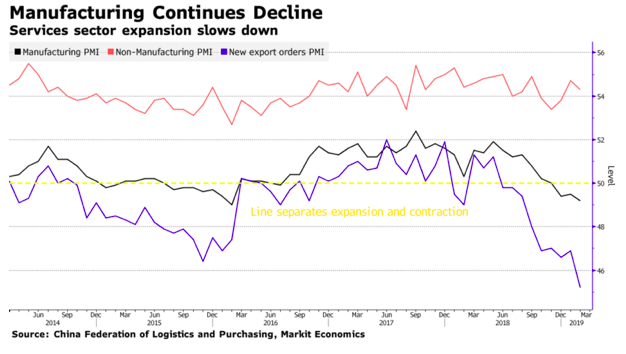

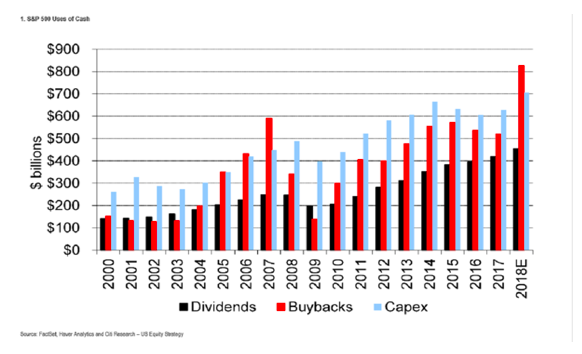




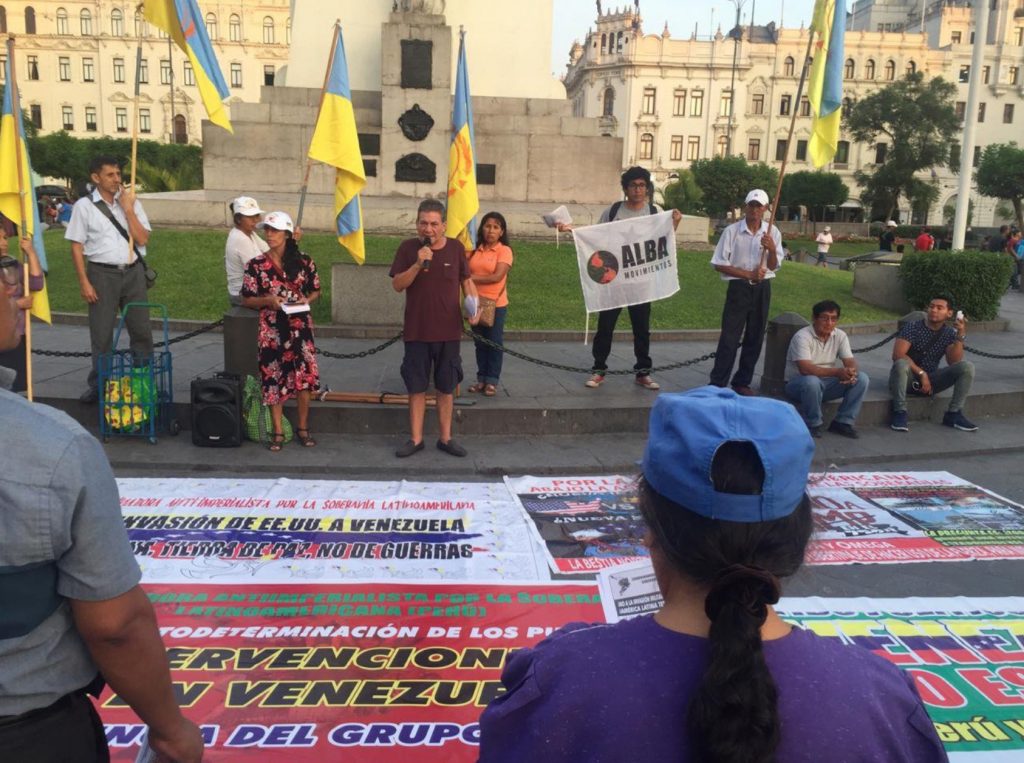





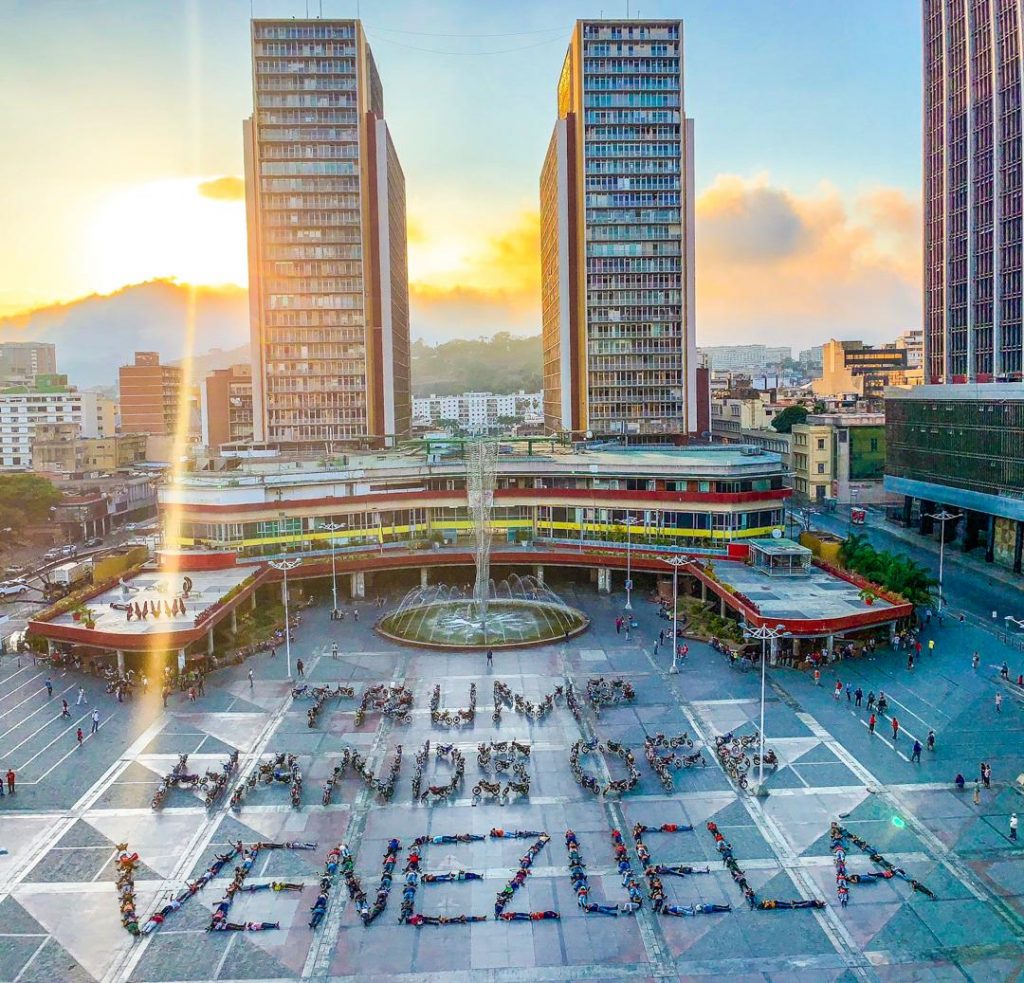





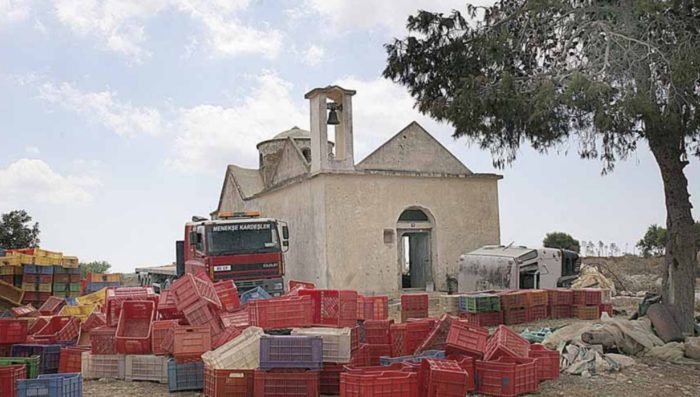
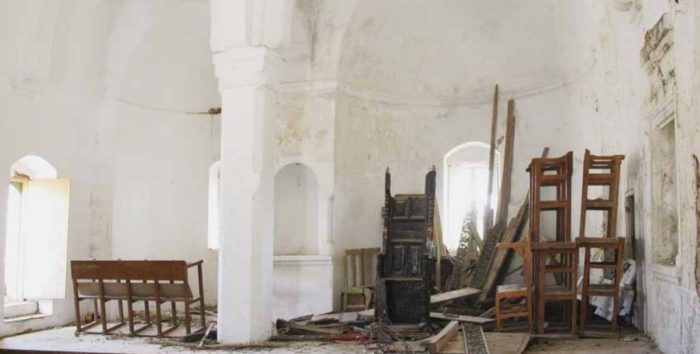




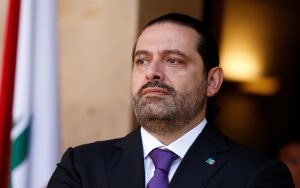


 Can you
Can you 


